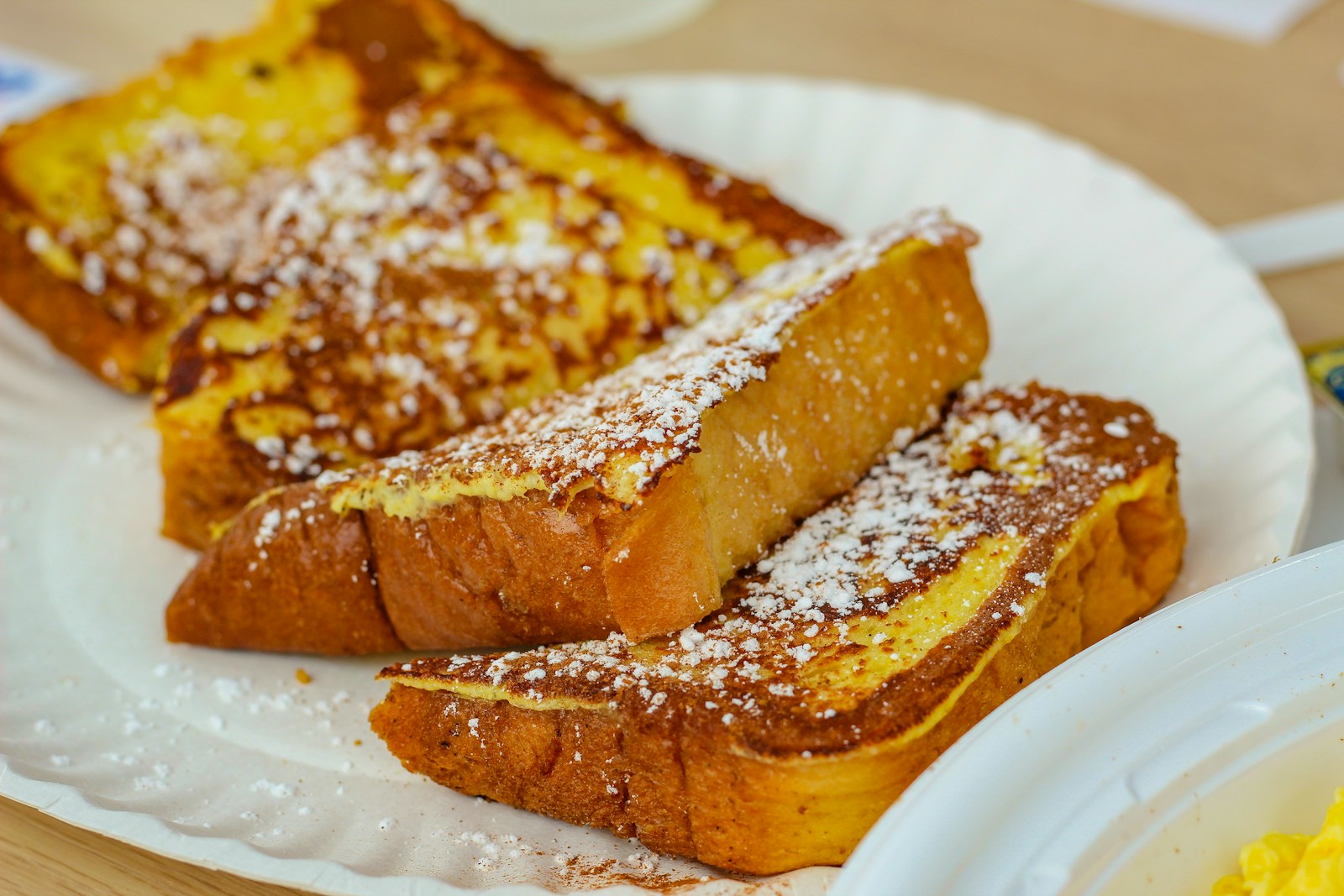Few breakfast dishes inspire such universal affection as French toast. Whether you’re craving a cozy weekend brunch or looking to impress overnight guests, this golden, custard-soaked classic always delivers. But achieving that perfect balance—crispy edges, creamy center, rich flavor—isn’t just about tossing bread into a skillet. It’s an art form, one that blends technique, timing, and just a pinch of culinary intuition.

What Makes French Toast… French?
Despite its name, French toast isn’t a product of Parisian cafés. Versions of the dish date back to ancient Rome, where cooks would revive stale bread by soaking it in milk and eggs before frying. In France, it’s known as pain perdu, meaning “lost bread,” a nod to its roots in frugality. What began as a thrifty solution for day-old loaves has evolved into a brunch staple beloved worldwide.
Step-by-Step: Mastering the Basics
1. Choose the Right Bread
Bread is the backbone of your French toast. Skip the pre-sliced sandwich loaves—opt instead for thicker, sturdier varieties that can absorb the custard without falling apart.
- Best Options: Brioche, challah, or a crusty artisan sourdough.
- Pro Tip: Slightly stale bread works better than fresh—it holds its structure and soaks up more custard.
2. Create the Perfect Custard
The custard is where the magic happens. It should be rich and flavorful, clinging to the bread like velvet.
Basic Custard Ratio:
- 2 large eggs
- 1/2 cup whole milk (or cream for extra decadence)
- 1 tbsp sugar
- 1/2 tsp vanilla extract
- Pinch of salt
Want a savory twist? Skip the sugar and vanilla, and add a dash of Parmesan, herbs, and black pepper.
3. Soak Thoughtfully
Don’t just dip—immerse. Let each slice sit in the custard for 20–30 seconds per side. You want the liquid to penetrate but not oversaturate.
4. Low and Slow is the Way to Go
Preheat your skillet over medium-low heat and use a mix of butter and oil for that perfect golden crust. Cook each side for about 3–4 minutes until it’s deep golden brown.
Pro Tips for Elevating Your Toast Game
Use Spices Strategically
Add a dash of cinnamon, nutmeg, or cardamom directly to the custard. Want to go next-level? Try infusing your milk with whole spices first.
Go Beyond Maple Syrup
Sure, syrup’s a classic—but don’t be afraid to experiment:
- Fresh berries and whipped ricotta
- Apple compote and toasted pecans
- Nutella and banana slices
For those planning ahead for a busy morning, check out these quick and healthy breakfast ideas to complement your French toast prep routine.
Mistakes to Avoid
- Using thin bread: It falls apart fast.
- Over-soaking: Results in a soggy interior.
- High heat cooking: You’ll burn the outside before the inside is set.
Making It Meal-Prep Friendly
Yes, French toast can be part of your weekly meal prep. Bake it casserole-style or freeze individual slices. To reheat, use a toaster oven or skillet—not the microwave.
When you’re on the go (or even planning an in-flight snack menu), consider making a French toast sandwich with peanut butter, jam, or even bacon and egg between two slices.
Flavor Variations Worth Trying
- Lemon Ricotta French Toast: Add lemon zest and ricotta to your custard for a bright, creamy result.
- Pumpkin Spice Edition: Perfect for fall—just blend canned pumpkin and pumpkin pie spice into your mix.
- Savory Pesto Toast: Ideal for brunches when you want something more robust than syrup.
And if you’re the kind of traveler who arrives early at the airport, you know that packing a satisfying, make-ahead French toast bite can beat most airport breakfasts.
French Toast vs. Big Mac Wraps?
Weird comparison? Maybe. But just like the viral Big Mac Wraps, French toast is all about balance—textures, temperatures, and flavor profiles that complement without overwhelming.
Pantry Power: Being Prepared
Stocking up on essentials like canned milk, vanilla extract, and spices can mean French toast is always on the menu—even when fresh groceries are low. Here’s why building a smart pantry can elevate not just your survival game, but your brunch game too.
Frequently Asked Questions
Q: Can I make French toast vegan?
A: Absolutely! Swap the eggs for mashed banana, flaxseed meal, or chickpea flour; use plant-based milk and coconut oil for frying.
Q: What’s the best way to store leftovers?
A: Let slices cool completely, layer between parchment paper, and freeze in a zip-top bag. Reheat in a toaster or air fryer.
Q: Can I use gluten-free bread?
A: Yes, just choose a dense loaf to avoid sogginess.
Conclusion
French toast is more than just a breakfast—it’s a ritual, a comfort food, a blank canvas for culinary creativity. With the right techniques and a touch of experimentation, you can turn even a humble slice of bread into a brunch masterpiece.
Have a favorite French toast topping or twist? Share your go-to variations in the comments below!
Leave a Reply